Only a Notre Dame fan can feel like they exist in purgatory despite the program winning at an 80% clip for the last four seasons. Yet it’s somewhat justified because of the hollow feeling one has after the Irish failed to win a playoff game in its best run since the Holtz era. They managed to dent the upper echelon with a win over #1 Clemson this past year, only to get blitzed in an ACC title game rematch. A crockpotting at the hands of eventual champs Alabama left Irish fans feeling even more dour.
2021 is setting up to be a reloading year with a grad transfer leading the offense while some younger players gets their sea legs. As things stand right now, 2022-2024 is set up to be another contending period for the Irish much like 2018-2020. The anticipated ascent of Tyler Buchner to the starting job and a retooled roster offers fresh hope that the next playoff bid will result in a 12th title.
Despite this theoretical pre-championship run lull, I would like to explore the current landscape of college football and see what Notre Dame needs to do to win a national championship. Hence the series name of Summitting Mount Saban. This series will cover the three key facets that I believe are key to Notre Dame reaching the mountaintop of college football’s hierarchy.
- Recruiting
- Tactics
- Trends
The goal of this segment is to determine just how far ND has to go in recruiting, where they are already doing well, and how to ultimately reach the pinnacle.
Blue Chip Ratio and Talent Accumulation
Bud Elliott of 247 Sports created the Blue Chip Ratio to better understand who was winning the recruiting arms race. If you’re unfamiliar with his work, BCR measures whether a school has signed more blue-chips than non-blue-chips over the last four classes. In doing research for this article, I noticed this quote from Elliott on his 2017 BCR season preview:
“It is likely going to be easier for a sub-50% recruiter to get a shot at a title, such as Michigan State in 2015 or Washington in 2016, but tougher to actually win. Non-BCR teams are 2-6 so far in Playoff games, including four losses by three or more scores. The only Playoff win by a non-BCR team over a BCR team was 2014, when Oregon beat FSU.”
Well, since then the only BCR team to make the playoff was the 2017 Oklahoma team which lost the Rose Bowl that year. So problem solved on that front! The playoff began with the hope that the “little guys” in recruiting would get their shot, which was bourn out in its first three years. Multiple non-BCR teams made the playoffs, including two sub-30% squads in 2015 Michigan State and 2016 Washington. Since then, though…
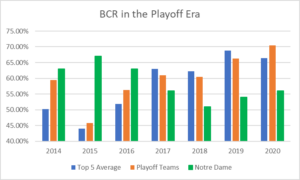
Oh 2015, what could’ve been.
The hope that the playoff would offer access to less talented teams shattered following Clemson’s victory over Alabama team in the 2017 national title game. Looking at the trends, the assumption moving forward is that you have to be a BCR team to even make the top-four at this point. The barrier to entry is inching upwards at a time when Notre Dame isn’t signing the kind of class that’s needed to seriously compete.
If you look at 247’s Talent Composite, it’s the same story. Unlike BCR, the Talent Composite includes transfers, walk-ons, and other players not part of recruiting classes. It still leads the the same conclusion of overwhelming talent = playoff success.
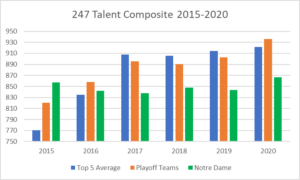
The current four-team playoff is becoming quite an elite club indeed and that will remain so unless the long-rumored expansion becomes reality. Until then, expect those at the top of 247’s class rankings to continue to dominate the CFP rankings.
It’s comically lopsided at the top
Take a look at the 247 top five rankings from 2002-2010 (the only reliable record from that era). What do you see? Obviously a lot of Pete Carroll’s USC and Urban Meyer’s Florida, but also Charlie Weis’ Notre Dame! The Irish placed in the top ten three years in a row under Weis including the #2 class from 2008. In fact, there was quite a lot of movement with different schools cycling in and out of the top spot. There were six different teams that signed a #1 class in the country from 2002-2010.
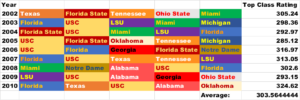
Look at the 2011-2021 rankings and you’ll see that number has dwindled to… two. Alabama has dominated the recruiting game with Saban as head coach (no finishes outside the top-five) while Georgia has come on strong under Kirby Smart since 2016. Ohio State and LSU have spent most of the past ten years hanging out in the top five, with a lone Notre Dame appearance in 2013.
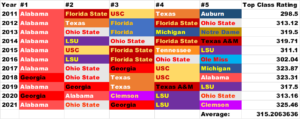
I’m sure you also noticed the average rating of the top class rose 12 points which is not an insignificant increase. If you were to extrapolate that to the top five, the average rose nine points from the 2000s to the 2010s. In football terms, that’s like adding another four star recruit to the top and taking that player from a less fortunate team. More talent is being concentrated at the top than ever before and this is a worrying trend for Notre Dame, who as you can see below is struggling to even stay within the top ten most years.
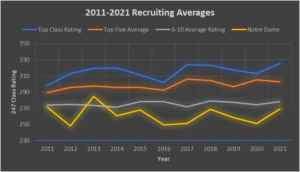
The unfortunate fact is that Notre Dame hasn’t recruited anywhere close to what is needed to win a national championship. The spectacular 2013 class aside, the Irish are usually dragging down the top ten average or outside of it entirely. Even the 2020 class which had freshman studs like Michael Mayer and Chris Tyree ranked 18th!
Now this is the part where I am legally obligated to state that recruiting rankings aren’t everything. Texas and USC have underperformed their lofty rankings for a full decade now while the likes of Wisconsin have consistently overperformed. Yet the teams which signed the top-five classes each of the last two years have either been national champions or runners up in the playoff era. However, there is a way to overcome much of that overall talent deficit.
Quarterbacks are (almost) everything
If you’re searching for hope, look no further than the Clemson Tigers. If you consider winning a game in the playoff to be a reasonable benchmark for Notre Dame, Clemson’s average BCR in the four years they’ve done that has been 55% (ranging from 47% to 61%) which is actually below ND’s BCR of 56% in 2020. The Tigers and Irish recruited in the same ecosystem for most of the 2010s before Clemson inked top-five classes in the last two cycles and looks poised to dominate the recruiting arms race alongside Bama, Georgia and Ohio State.
As you already know, quarterback is the ultimate equalizer and no team in the country has nailed that position better than Clemson since 2014. The Tigers are on an unparalleled run on game-changing QBs from Deshaun Watson to Trevor Lawrence with D.J. Uiagalelei poised to be another grand slam. It’s sobering to think that Watson led the Tigers to the national championship despite having a squad which ranked 9th in the 247 Talent Composite, just one spot ahead of the disastrous 2016 Irish of that same season.
We all love Ian Book and this writer will never sully the name of Notre Dame football’s winningest quarterback. Yet, the only quarterback to start in the national championship game since 2015 who wasn’t a blue chip recruit was Mac Jones this past season who basically played with a college All Star offense. So unless you’re going to recruit better than Nick Saban, you need to do better than him at the most important position.
| National Championship Game Starters Since 2016 | 247 Rating |
| Trevor Lawrence* | 0.9999 |
| Justin Fields | 0.9998 |
| Tua Tagovailoa* | 0.9843 |
| Deshaun Watson* | 0.9794 |
| Jake Fromm | 0.9794 |
| Jalen Hurts | 0.9231 |
| Joe Burrow* | 0.9003 |
| Mac Jones* | 0.8815 |
* Represents national title winning QB, decided to give it to Tua over Jalen Hurts for the 2018 title game.
As Michael Bryan noted in his mythbusting piece, getting an elite quarterback is only half the battle. It takes far more than just a Kyler Murray running around in order to win a national championship, as proven by the Oklahoma team around Murray. Jones and Joe Burrow weren’t consensus five stars, but you get why their teams won the national championship just by watching the overall talent on the field. However, you have to start somewhere and it will be immensely difficult for the Irish to win in the playoff unless they’re building around a ceiling raiser under center.
This solidifies the fact that all the eggs are in the Tyler Buchner basket for Notre Dame. Brian Kelly will once again get another chance to develop a bona fide blue chip quarterback after the likes of Dayne Crist and Brandon Wimbush fizzled out. The good news is that should Buchner pan out, he won’t have to Lamar Jackson the Irish to victories because…
The Irish aren’t far behind in key places
For as good a concept as BCR is, I think it is a bit lacking in providing the full picture when it comes to talent accumulation. After all, it doesn’t include transfers, walk-ons, and other players not part of recruiting classes. It also doesn’t give an idea of overall roster balance. Are the blue chips mostly on offense or defense?
So I would like to present my own rudimentary creation: Position-Specific BCR. This average can better measure where the blue chip recruits are concentrated and where teams are lacking. It’s as simple as it sounds, take the four and five star guys and see how proportional they are to everyone else at that position. Here’s a few other things to consider when pondering these charts:
- The numbers will be different than Bud Elliot’s team BCR’s because I will be including non-recruited players.
- I’ve also decided to not include quarterbacks because this article has already touched on that position and we’re more interested in the other places ND can improve.
- I combined corners and safeties into a single defensive back category because those positions can be fluid with players moving back and forth.
- I’m using 2020 data because there’s not enough roster information on other teams yet.
The Irish had a pretty interesting profile last year when compared to some aspirational peers, all things considered.
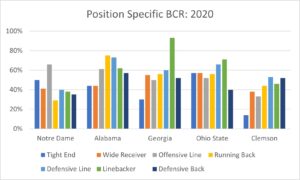
The Georgia linebacking corps. 🤯
Most of this data seems to confirm what we already know. The Irish lagged behind their competitors at receiver and running back while recruiting well at tight end and on the offensive line. The real shock is on defense, where it seems Clark Lea squeezed a lot of production from relatively unheralded talent. If we collated the numbers on that side of the ball into a Defensive BCR, Notre Dame would be at 37% behind Clemson (51%), Ohio State (58%), Alabama (63%), and Georgia with a whopping 67%.
The offensive numbers are more promising, especially on the line where the Irish have killed it in recruiting. ND’s 66% BCR rate at that position outpaced every other school in the country in 2020 and that trend is set to continue after another impressive haul from the 2021 class. The Tight End U pipeline has also ensured a steady supply of high caliber players while both wide receiver and running back are getting a hypothetical talent infusion. The 2020 Irish were at 48% offensive BCR which was just seven points behind the national co-leaders of Alabama and Ohio State.
The defensive numbers are more difficult to square. Notre Dame is pretty far behind its competitors in getting blue chip talent on campus even if you removed Georgia and Alabama. However, the second BK era has been a beacon of hope when it comes to player development and that is evident on defense. New DC Marcus Freeman will helm a defense which elevated a three-star talent to the best linebacker in college football and sent a Navy transfer to the NFL draft in the past two seasons. He needs to continue that level of development while continuing to peel off more of the big fish.
It is important to point out that the blue chippers for the Bamas and Ohio States are, well, more blue. ND and OSU had nearly the same BCR for defensive backs (35% vs 40%), but the Buckeyes’ boasted three five stars DBs against Notre Dame’s one, along with doubling up the Irish in blue chip depth (12 vs 6). This demonstrates how important it is to sign a couple of five stars like Shaun Wade or Tyreke Johnson in every class rather than just occasionally.
Still, there is plenty to be optimistic about particularly when you look at what Clemson has done with their offensive talent. Of course, what’s really missing is the transcendent quarterback and/or a Michael Floyd-type on the outside to take the Irish to the next level. The only team to win a national title with a BCR below 50% was the 2010 Auburn Tigers… which started a Mr. Cameron Newton at QB who had one of the greatest seasons in football history. If Notre Dame can find the next great one under center and pair him with good enough talent on offense and defense, they will have a shot.
Conclusion: How do you recruit better?
Despite the good news about where Notre Dame is closer than anticipated in the recruiting game, there are obvious shortcomings. The Irish don’t have the same amount of quality depth as their adversaries and it will take multiple top-five classes to build that foundation. Alabama and Ohio State seem to ink an inexhaustible supply of 247 five stars while BK and co. have landed just two since 2017. Notre Dame is still getting high end talent, but not the highest end which is what’s needed to dethrone the current ruling class.
The “how do you recruit better?” question is of the million dollar variety because in the past the answer would’ve been to just win, baby! Conventional wisdom tells us that winning brings recruiting success, which means the Irish should be signing classes which reflect their current position as a top six program in the country. It’s how Clemson, Florida and Oklahoma have upped their recruiting game over the past few years. It’s also how ND was able to sign a consensus top-five class after the 2012 season. So why isn’t this happening for Notre Dame in 2021?
The answer is, predictably, a combination of different elements. Some of them have been debated for decades, while other factors are recent developments. The arguments over academic and/or cultural fit could go around in circles forever, which makes it more worthwhile to focus on things within Brian Kelly’s immediate grasp in the present day. The most important of which includes:
- Getting good recruiting coaches.
- Continuing to develop overlooked talent.
- Landing the obvious fits.
- Take advantage of the new transfer rules.
So far so good on number one, at least on defense. Marcus Freeman has been as advertised on the recruiting trail and is single-handedly changing the perception that ND can’t reach a higher level in this regard. However, he is just one man and will almost certainly be headed elsewhere within a couple of seasons should things work out. What happens then? Will BK stay aggressive in seeking out a recruiting tiger? Or will he fall back on old habits? Will he also look for a Freeman on offense?

On my way to steal your five star defensive back.
In Murtaugh’s Rose Bowl review, he argued that BK has to hire more ace recruiters as coaches for the Irish to have a chance at reaching true title contention. I agree on the condition that it does not sacrifice the excellent development program ND has created. As mentioned before, the Irish are doing a stellar job of getting players to punch above their weight until they run into eventual NFL first round picks.
If you want to look at this a different way, the goal moving forward should be to continue getting three stars to play like five stars, but also get four and five star guys to play at an NFL level. Plug enough blue chips into the development machine and you become Clemson with a better academic reputation and a far more compelling schedule every year.
In 2021, the 34 five-star recruits according to 247 chose 15 schools and the bottom line is that Notre Dame has to do a better job of making sure it’s in that elite club. The coaching staff simply cannot tolerate losing elite players who check all the right boxes (ex. Will Shipley) to ND’s direct competitors. Could you imagine if BK had lost Jaylon Smith to Michigan or Ohio State? That’s the thought process Notre Dame has to have in mind when it’s approaching a player of that caliber who also fits on campus.
Finally, number four is perhaps the ultimate wild card. 2019 famously featured a playoff where Trevor Lawrence was the only quarterback who started for the school that signed him. Joe Burrow, Jalen Hurts, and Justin Fields were all transfers, a distinction also shared by the Heisman Trophy winners from 2017 to 2019. Notre Dame just landed their own presumptive 2021 starter at QB in transfer Jack Coan, but this arms race is expanding to every position.
Luckily the Irish seem to be right in the mix in this regard having aggressively pursued and added major contributors such as Alohi Gilman and Ben Skowronek in recent years. The Irish and other schools are preparing for de facto free agency by signing larger classes, something our writer Tyler Hack noted in his 2022 recruiting predictions. The loosened rules will almost certainly lead to higher roster attrition and more transfers which is an easy way for teams to add talent.
In the past, transfers out of South Bend have usually hurt the Irish more than incoming talent has helped but the generous new rules offer a fresh start. ND can replace lost talent far easier through the transfer market rather than losing a Gunner Kiel or Davonte Neal for nothing. We’ve seen the staff reel in guys who have played significant minutes for some good Irish teams so it can be done. We just need to see if they can get a game-changer in the mold of Trey Sermon to come here next.
At this moment, Notre Dame’s current 2022 class ranks 2nd in 247 after the commitment of Joshua Burnham last week. There’s still a long way to go, but the early recruiting returns from the Freeman Era are undoubtedly encouraging. As I’ve mentioned before, it’s going to take multiple top five classes to catch the ruling caste but it’s not impossible. If Kelly and the staff can peel off a couple of five stars this season, the Irish will have a good chance at finishing where they want to. Then they’ll have to do it again, and again, and again…
This marks the end of the recruiting chapter in this saga. Some bad news and worrying trends, but a lot of silver linings if you’re hoping to see Notre Dame win a national title soon. If you want to stay on top of Irish recruiting sure to check out our work right here at 18S. Tyler and Brendan do great work on this subject as do our other writers.

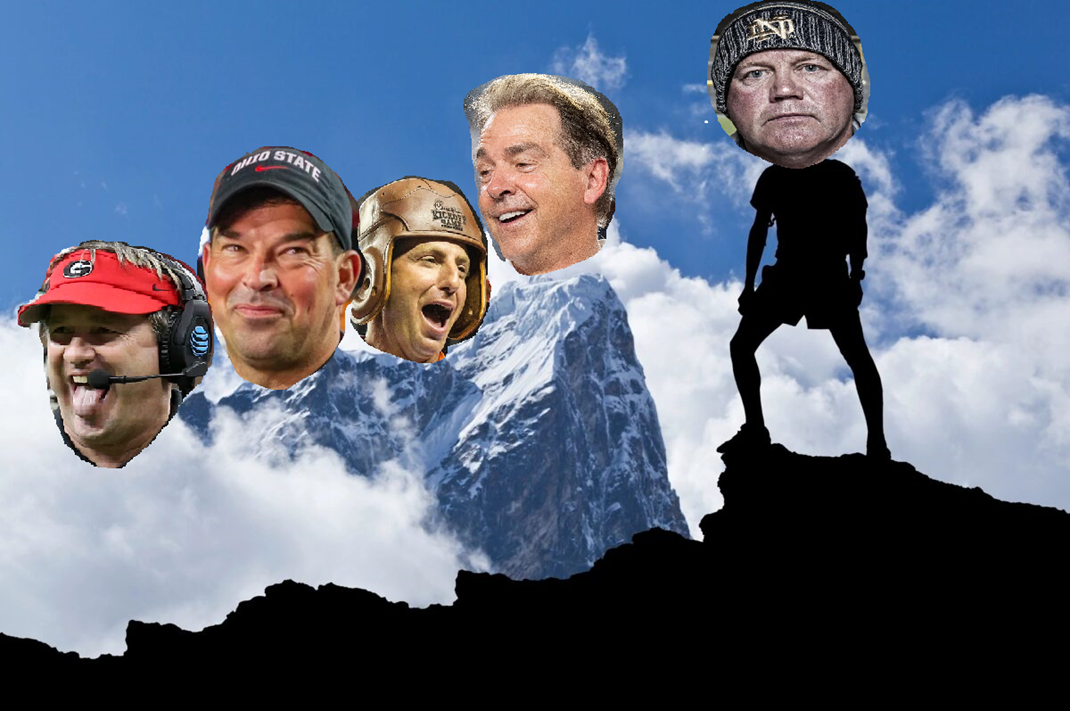
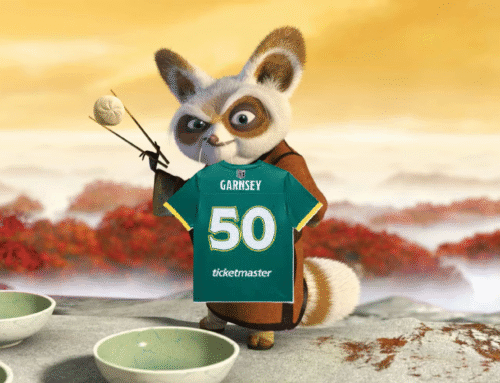
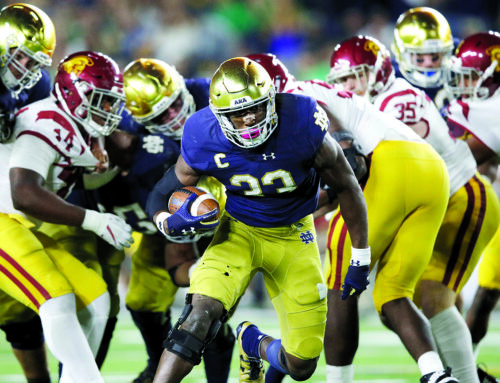
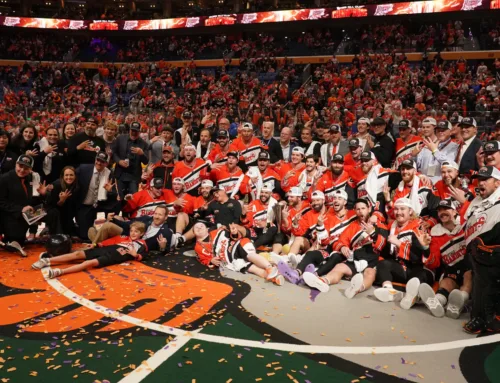
Great stuff. All-time header photo and I love the colorful graphs!
Very informative. I was also coming here to point out the title picture in appreciation, that’s tremendous.
Thanks hooks!
Great article! It is really eye opening to see that Lea was doing a great job producing results on defense, but was lagging a bit in terms of recruiting blue chippers.
In case you missed it, both Stew and Bruce from the Athletic ranked BK as the 3rd best coach in college football — it seems like both recognize the great job BK has done with development and getting ND into the playoffs. Now it’s time to build on that further with some improved recruiting across all positions
Interesting to think about in the bigger perception. 2 playoffs in the last 3 years and all those 10 win seasons are pretty impressive. Plus, not to brag, Kelly is also the ACC’s all time regular season win% leader.
Stew followed up this topic today in his Mailbag column. He remarked that BK has won at high level everywhere he has been, but suggested that BK has probably hit his ceiling at ND because of the combination of factors like academics and location at ND (but he is still impressed by BK’s work).
An interesting tidbit is that he suggested that BK might do really well at USC because his job would be so much easier there.
That would be interesting. Kelly doesn’t strike me as the SoCal type but I could see what he was talking about.
I was thinking about this though, and what if Tressel imploded just a couple years earlier at tOSU, right when Kelly was building up Cincy and while Urban still had his machine running full tilt at UF and we presume he wouldn’t have been interested? I could see Kelly at Ohio State doing well, and that timeline was very close to fitting, even though it obviously didn’t play out that way.
The 2015 playoff was Bama, FSU, tOSU, and Oregon. So that bar chart looking so weak must be Oregon dragging it way down. Another point in the QB importance column.
Edited: Oh wait. That was the playoff in Jan 15, so the 2014 season.
2015 season was Bama, Clemson, OU, and MSU. That makes way more sense.
Yup, the BCR’s for those teams in the 2015 season were:
Bama: 77%
Clemson: 47%
OU: 38%
MSU: 21%
We were so close to having Iowa in there with a 9% BCR!
Really great article. To pick a nit, because I have to be that guy: “continue getting three stars to play like five stars” is somewhat optimistic. Since Tyler Eifert graduated, ND has had exactly zero first-round picks from their three-star recruits (though it is probable though not certain JOK will be the first). Considering there are about 35 five stars each year, “first-round pick” is arguably a pretty good comparison for whether or not somebody is playing like a five-star. Even if you want to expand the criteria a bit to, e.g., consensus All-America status, that gets you all the way to… two (JOK and Julian Love).
This is all to the point of the article, though: the talent that they are bringing in needs to get better. Even with pretty good development, it’s just not enough to overcome a huge gap in starting material.
Thanks! And correct, I think making three star players into productive starters is totally fine and should be expected. JOK is who I was thinking of when I made that statement even if he is going in the first round.
Nice job on the graphics. It has always seemed to me that a better indicator or recruiting is the rating per recruit rather than the class ranking. A big class can boost the rank and a small class can lower the rank. A rating of .93 per recruit would be nice. How is ND doing on that this season?
Last season ND was at .8969 for average recruit rating, this year they’re at 90.89. Not a massive increase, but there’s a lot of big fish still on the board that the coaching staff is really involved in. Lots of room to grow on that front.